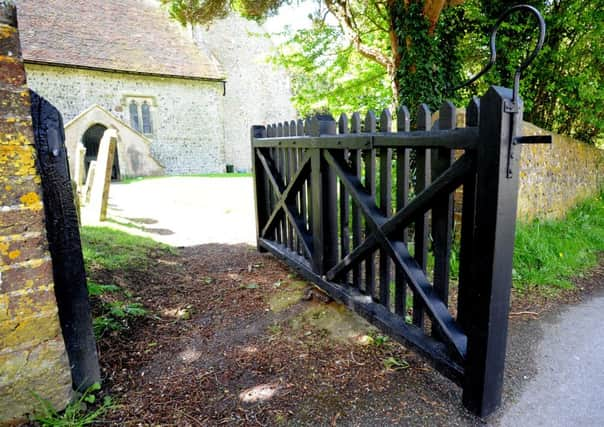A special church on afamous pilgrims’ trail


The Church of the Transfiguration at Pyecombe dates from 1170 and has Grade I status - a category awarded by English Heritage for buildings of national importance.
The attractive church, which has a 13th century tower topped with a tiled roof known as a ‘Sussex Cap’, is on an ancient track once used by pilgrims along the South Downs Way and has one of only six remaining Tapsel Gates in Sussex.
Advertisement
Hide AdAdvertisement
Hide AdThe gate at the entrance to the churchyard has a distinctive central hinge and incorporates the hooked end of a shepherd’s staff - a type of crook made in the former village smithy.
The church itself was built on the site of an earlier Saxon church and was under construction at the time of the murder of Thomas a’Becket in 1170 – an event that led to huge numbers of people making a pilgrimage to his shrine in Canterbury Cathedral.
The traditional ‘Pilgrims Way’ ran from Winchester to Canterbury, but people made their way from all over the South of England.
Pyecombe was probably a favoured stopping place, where hospitality would have been offered.
Advertisement
Hide AdAdvertisement
Hide AdThe Veolia Environmental Trust, which supports environmental projects across the UK, has just awarded a £20,000 grant towards a £138,000 project to provide running water, a kitchen, storage and toilet facilities at the church, which remains a favourite tourist spot along the South Downs Way.
Step inside the building and you will see a rare lead font dating from 1170, which is one of only three in Sussex.
Evidence of whitewash on the lead is said to date from the civil war in 1645 when residents wanted to prevent the font from being melted down for bullets.
The floor tiles around the altar date from the 13th century and were made by craftsmen from the powerful Lewes Priory.
Advertisement
Hide AdAdvertisement
Hide AdIn 1603, a particularly bad outbreak of plague created a village in two halves. Fearful of catching the pestilence, villagers re-settled half a mile further west in what is now known as ‘Pyecombe Street’.
It was about this time that the original dedication or name of the church was lost. The current name, which is most unusual for an Anglican Church, dates from the 20th century.
At the end of the 19th century, the whole church was encased in pebble dash, covering the original flintwork.